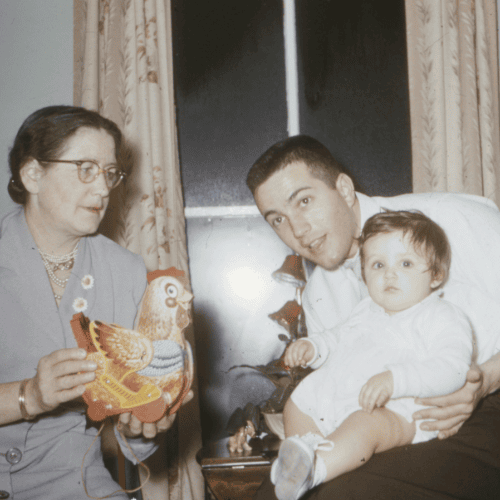
The Ballmer Group: Reaping the rewards of loyalty
Steve Ballmer, former CEO of Microsoft, transitioned from a tech mogul to a philanthropist. Discover the story of loyalty, philanthropy, and impact as he channels his wealth through the Ballmer Group to reshape opportunities for underprivileged children.

The Ballmer Group, founded by Steve Ballmer and his wife Connie, is a philanthropic organisation dedicated to improving economic mobility of underprivileged children and families in the United States.
About the Company

The Ballmer Group
- Location United States
- Type Philanthropy firm
Becoming Steve Ballmer
Born in 1956 in Detroit, Ballmer’s father was an immigrant from Switzerland who became a general manager at Ford Motor Company. Steve grew up astute in school, graduating valedictorian in high school. He was accepted at Harvard, where he graduated cum laude with a bachelor’s in mathematics and economics. But while there, he got one thing better than a Harvard degree: he met Bill Gates.
The power of association has worked wonders for Ballmer. Before joining Microsoft, fresh out of Harvard, he worked as an assistant product manager at Procter & Gamble. He shared an office with the future CEO of General Electric, Jeffrey R. Immelt. Steve was also studying towards an MBA at Stanford at the time. But when the call came from Gates to become the first business manager at Microsoft, he dropped everything to join the team.
Ballmer describes telling his parents that he was quitting Proctor and Gamble and dropping out of Stanford to Microsoft in this The David Rubenstein Show. Though an intelligent man, his father couldn’t wrap his head around the concept of software. And his mother couldn’t conceive of the idea that people would ever need personal computers.
Leading Microsoft
At a decent $50K per annum, Ballmer’s starting position was as Assistant to the President, Bill Gates. In a true startup fashion, he headed up the professionalisation of the company’s accounting processes. He also took up the HR department and hired more staff. But his breakthrough moment came when IBM approached the company to provide software for their personal computers.
Ballmer headed up the sales deal and was instrumental in landing the major deal with IBM in 1980, the same year he joined the company.
In 1986, the company went public. And as Gates’ number two, Baller quickly rose through the ranks. In 1992, he was promoted to Executive Vice President of sales and support. The company’s revenue was around $2 billion when he assumed the position. By the time he was promoted to company President in 1998, Microsoft’s revenue had reached over $15 billion.
In 2000, Ballmer was named Chief Executive Officer, taking care of the company’s finances and operations, leaving Gates as the chairman of the board and chief software architect. Despite the bust of the dot.com bubble, Ballmer continued to grow Microsoft’s enterprise strategy. He oversaw the launch of the original Xbox and invested in the cloud. By the time he retired, Microsoft’s revenue was at $86 billion. And the first thing he did after retirement was buy a basketball team in the NBA, the Los Angeles Clippers.
The Ballmer Group is born
Connie Snyder, Ballmer’s wife, had been actively involved in philanthropic work aimed at helping foster and underprivileged children in the state of Washington. In 2015, Ballmer decided to join his wife in philanthropy, and the two co-founded the Ballmer Group. At the beginning of his philanthropic work, Ballmer became obsessed with understanding how much the government was actually helping disadvantaged children. However, he found it challenging to locate accurate data and statistics, which motivated him to establish USAFacts.
USAFacts is a not-for-profit organisation and website that provides data and reports on the United States population, its government’s finances, and its impact on society. Ballmer was interested in having a unified view of government activities and expenditures. Specifically, he wanted to know where the money comes from, where it goes, and the impacts of wealth transfer.
Therefore, the sole purpose of the Ballmer Group was to help children, especially those born at the bottom of the economic ladder, to move up economically. The group funds leaders and organisations that have demonstrated the ability to reshape opportunity and reduce systemic inequities.
The group also provides grants that target direct services to strengthen communities in the short term, as well as initiatives that have the potential to transform systems in the long term. The organisation recognises that systemic racism creates obstacles for people of colour to advance economically and strives to address barriers to racial equity in all of its endeavours.
Together with the USAFacts, the Ballmer Group is finding ways to stimulate the right behaviours and spending by the government. In particular, Ballmer has been very active in popular US news talk shows in his endeavour to influence the government to spend resources correctly, as he believes it can make a significant difference.
Although he admits that topping Microsoft’s accomplishment of changing the way people work forever is tough. And with regards to ever selling his shares at Microsoft, Ballmer describes himself as a ‘loyal guy’ who still drives a Ford because his father worked at Ford.





